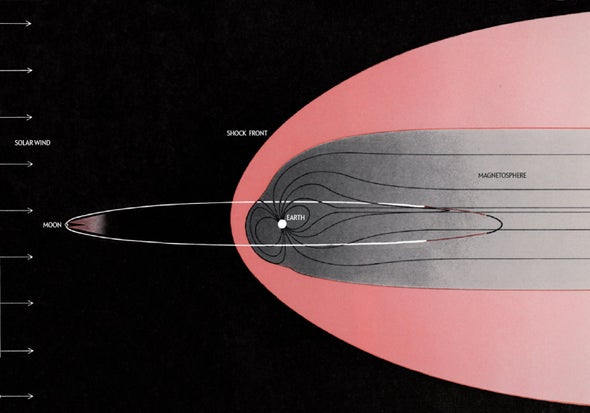1971
How Locusts Control Yaw
“Like an airplane, an insect can roll around its longitudinal axis, pitch around a horizontal axis or yaw around a vertical axis. It appears that locusts have two different yaw-correcting strategies: (1) a rapid change in wing twist, abdomen position and leg position controlled by wind-sensitive hairs on the head, and (2) a slower, subtler movement of the same general character evoked by cervical receptors. It seems that the change in wind angle, indicating a yaw, is integrated somewhere in the locust’s central nervous system, and is followed by independent motor commands to the wings, legs, abdomen and head.”
1921
Tasty Radio
“Two engineers recently conducted experiments to determine the feasibility of reception of radio signals by the sense of taste. Electrodes were placed under the tongue to cause a taste sensation when a source of [electrical] potential was connected to them. Tests were made, using low-potential direct current and 60-cycle alternating current, to ascertain the amount of energy and potential necessary for taste reception. The reception of actual signals from an antenna was tried. It was found impossible, [even with] four stages of amplification. The results indicate that while from an electrical standpoint it is possible to receive radio signals by the sense of taste, it is much inferior to that of hearing, or even of sight.”
Orange Tree Never Quits
“An ever-bearing orange tree which citrus fruit growers believe is destined to revolutionize the orange industry has been discovered by horticulturists in a small grove at Avon Park, Florida. To protect the specimen, its purchasers have placed around it a heavy wire fence 20 feet in height and stationed guards day and night. The tree has been in bearing continuously eight years, but until recently its existence was known only to the owner and several neighbors, who, according to citrus experts, did not realize its value but regarded it merely as a freak of nature. A syndicate has been formed to propagate the tree so that a large number of trees may be set out in groves in 1923.”
1871
Early Fake Leather
“Enameled cloth enters into many uses as a substitute for leather. Its most important use is that of covering for carriage tops, for traveling bags and trunks, and not rarely is it worked up into rainproof coats and pants. The foundation is cotton cloth, which is slowly passed through a machine’s iron cylinders. It first receives a coating of a black, disagreeable-looking substance composed of oil, lampblack, resin and other ingredients, boiled together till about the consistency of melted tar. Then the cloth is wound upon a huge wooden frame that is passed into a heater to dry. It then is laid on long tables, and workers sprinkle with water and rub with pumice stone, till the whole surface is made perfectly smooth. The fabric is thoroughly varnished, and again passed through the heater. It is now a piece of cloth with a thick, shining coat of black, very much resembling patent leather.”
Wonders of Chloroform
“Chloroform is the best known solvent for camphor, resins and sealing wax; it also dissolves the vegetable alkaloids. As a solvent it will remove greasy spots from fabrics of all kinds, but its chief use is as an anesthetic. There are several other volatile organic bodies which possess similar properties, but none produce the total unconsciousness and muscular relaxation that follow the inhalation of chloroform.”


